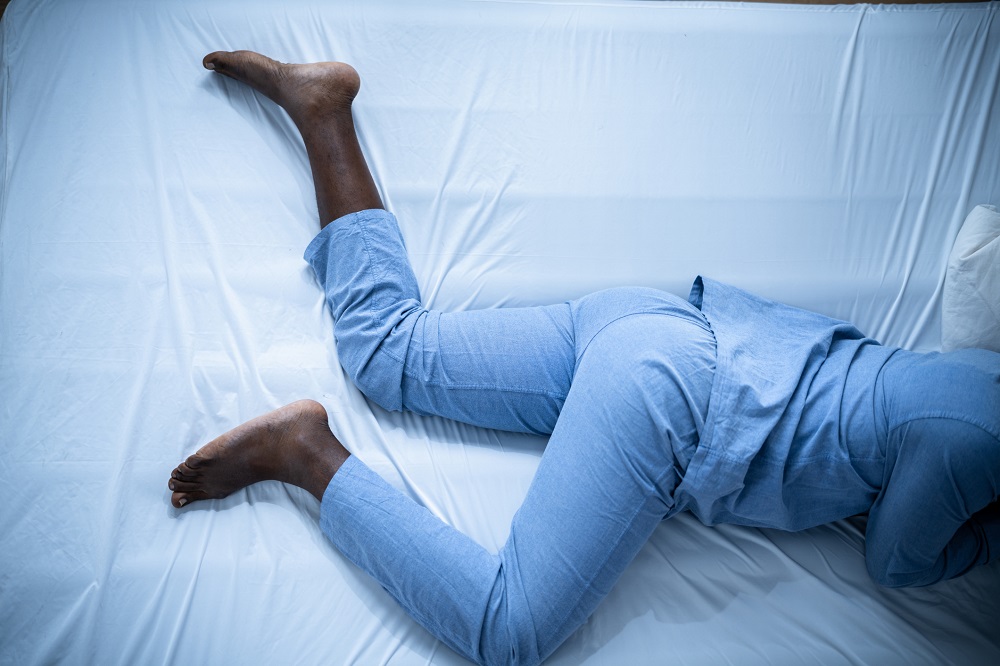Catching Zs is essential for a happy, healthy lifestyle, but many of us have experienced sleep...
Read More
Restless leg syndrome is a neurological disorder that causes uncomfortable sensations in the legs, accompanied by a strong urge to move them. Symptoms tend to strike at night, which leads sufferers to lose precious sleep.
The name itself—restless leg syndrome—is an accurate description of the condition, which is characterized by a persistent, unpleasant feeling in the legs or other extremities. The sensation is often described as crawling, throbbing, aching or pulling, and the severity can vary from patient to patient. Symptoms tend to strike at night and, over time, sleep deprivation can lead to a range of other health complications.
Some patients experience symptoms infrequently, while others find themselves overwhelmed with discomfort every time they sleep or sit for an extended period of time. This can make activities such as watching a movie, taking a plane ride or sleeping difficult. Restless leg syndrome can cause sleep deprivation, and secondary symptoms like fatigue and anxiety can appear if RLS goes untreated for a long period of time.
In order to pinpoint the underlying cause of your condition, your doctor will conduct a physical and neurological exam. Depending on your specific symptoms, other tests, such as bloodwork, may be necessary. Your doctor may also refer you to a sleep specialist for a sleep study. A polysomnogram, or sleep study, is a comprehensive test that transmits and records specific physical activities while you sleep, such as your heart rate, brain activity, eye movement and oxygen levels, through a series of electronic sensors placed on your legs, head and chest. RLS can only be detected during in-lab sleep studies, so home sleep testing would not be appropriate for this condition.

If you are diagnosed with RLS, there are a variety of potential treatments your doctor may recommend, based on the severity of your condition. Treatment options include:
People with RLS may benefit from lifestyle habits that help with better sleep, such as avoiding caffeine, exercising regularly, quitting smoking and practicing relaxation techniques.
Muscle relaxants and sleep medications are both medication options that may help alleviate symptoms of RLS.
Sleep deprivation can lead to a number of health conditions, which is why screening for RLS is so important. At Inspira, we understand that better sleep leads to better health, and our sleep technicians work closely with other Inspira specialists, taking a holistic approach to care to understand your sleep disorder and other concurrent conditions.
Care at Inspira is always close to home, with a team of skilled, licensed sleep specialists practicing at five sleep centers across South Jersey. With experienced providers and state-of-the-art technology in a calm environment, high-quality diagnostic and therapeutic sleep services are right in your backyard.
Our sleep specialists treat patients around South Jersey from state-of-the-art facilities.

Catching Zs is essential for a happy, healthy lifestyle, but many of us have experienced sleep...
Read More
There’s no wrong time to exercise, but there are different benefits for men and women, depending on...
Read More
About one-third of adults in the United States report getting less than the recommended amount of...
Read More
The material set forth in this site in no way seeks to diagnose or treat illness or to serve as a substitute for professional medical care. Please speak with your health care provider if you have a health concern or if you are considering adopting any exercise program or dietary guidelines. For permission to reprint any portion of this website or to be removed from a notification list, please contact us at (856) 537-6772